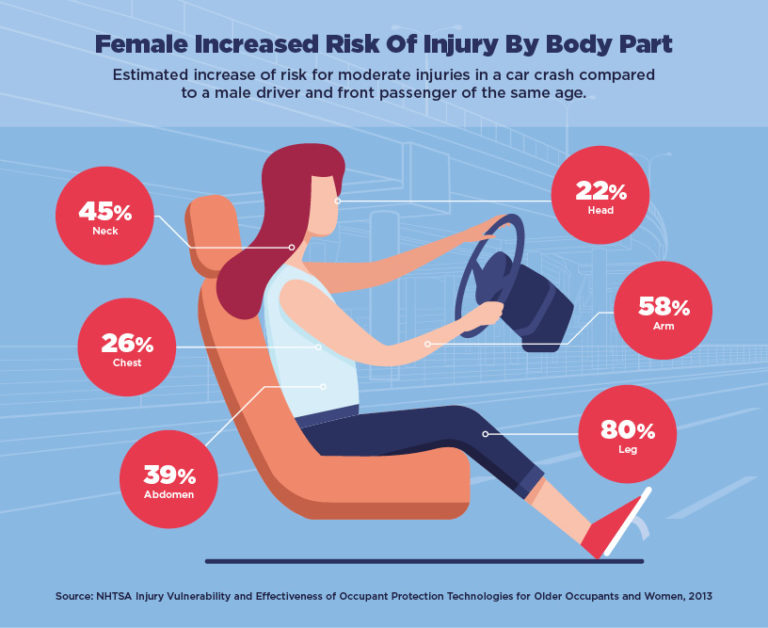“Seeing men as the human default is fundamental to the structure of human society. It’s time for women to be seen."
- Caroline Criado-Pérez, Invisible Women: Data Bias in a World Designed for Men
As of F.Y. 2020-21, India is the fourth-largest automotive market in the whole wide world.1 The AatmaNirbharBharat Initiative seeks to make India the “number one” automobile hub in the world. In fact, very recently, on June 24th, 2022, Union Minister for Road, Transport and Highways Nitin Gadkari approved a Draft GSR (general statutory rules) Notification seeking comments on a proposal to introduce the Bharat New Car Assessment Program (Bharat-NCAP) to increase the export-worthiness of vehicles and competition on safety parameters among manufacturers.
At this point, you must be wondering if any of this information has anything to do with inclusivity in UX research, right? Hold on! Let us get there! This article is to make a case about the fundamental diversity and inclusivity problems across the globe along multiple dimensions, including the field of the automotive industry.
Underrepresentation of almost 50% of the population
Similar to the Global NCAP, the Bharat NCAP does not provide any impetus for female drivers or their safety. The general stereotype goes that women are not safe drivers. However, plenty of mainstream research has shown that women are equally skilled and yet prone to accidents because of the usage of male dummies for testing the safety of the former.
As per the scathing takedown of the world which does not account for almost half its population by Caroline Criado Perez in her book “Invisible Women: Data Bias in a World Designed for Men," although men are more likely than women to be in a car crash.
A woman in a collision “is 47% more likely to be seriously injured than a man... [and] 17% more likely to die”. Reasons, you ask? Female anatomy and utter disregard for its differences from the average male body.
While underrepresentation is a huge dent in recognising differences, it is not the end. The end result is that the product, or the car, in this case, is not the optimum of what it can be. In fact, according to a study by the Center for Talent Innovation (CTI) companies that value diversity and promote inclusivity are 45 percent more likely to grow their market share year over year.
Let’s understand what the current crash testing situation is in India
In India, currently the testing facilities are at Indore (NATRAX), Pune (ARAI), Manesar (iCAT), and Chennai (GARC). The benchmark for vehicles to clear crash tests is to use a Hybrid III 50th percentile dummy (a 5’9″ male dummy weighing 78 kg) in both driver and passenger seats.
Staying true to the benchmark, which can only ensure “minimum safety," GARC uses only male dummies. However, ARAI says its crash facility has a Hybrid III 5th percentile dummy (a 4’11” female dummy weighing 50 kg).
A notable scathing indictment (or not), however, is the fact that according to the 2020 NIN (National Institute of Nutrition) standards, the average height and weight of Indian men are 5’8" and 65 kg, and for an Indian female, they are 5'3" and 55 kg. This means even the usage of Hybrid III 5th & 50th percentile dummies is way outdated!
So what are the risks that female drivers run?
The risks were made more clear by Volvo’s E.V.A. initiative, wherein their Accident Research Team has compiled real-world collision data since the 1970s. We are presenting the data points from the initiative while combining justification from multiple sources, including a panel discussion in Bengaluru held in 2019 and accounts of independent research held over the last decade (2011-2021).2 These data points can act as a real eye-opener for designers and higher-ups in the automobile industry. In fact, the prolonged ignorance of these “design faults” might translate into a lost opportunity.
- Women are at a higher risk of whiplash than men. This is because the neck muscles of men are more defined, and the current seat-belt design does not consider this.
- The seat belts don’t fit a pregnant woman in her third trimester. The discomfort and apprehension about seat belts being a potential risk to their baby during a crash result in an uncanny number of fetal deaths per year globally.
- Due to differences in chest anatomy and strength, women are more likely than men to experience a chest injury in a car accident.
Lost opportunity
“There were countless smartphones before Apple’s iPhone burst onto the scene. There were taxis before Uber and social networks before Facebook. There were plenty of vacuum cleaners before Dyson... All of these companies share one thing. It is their relentless focus on the customer and delivering the best user experience possible. “ - Miklos Phillips, Head of User Experience Design at Toptal."
Not accounting for all user scenarios, problems, goals, and ideas translates into lost opportunity. Speaking strictly from the business perspective, a product that caters to a wider range of users is more successful in retaining customers and generating revenue. At present, driving a car is considered a male thing to do. This is probably accentuated by the fact that the cars running on the roads at the moment aren’t even comfortable enough for female drivers.
The future!
We need to be inclusive in the future! Inclusion not only in the testing process but also in the overall planning, strategy, and execution of everything! Because "women do not get forgotten when women are involved in decision-making, in research, in knowledge production." In order to capture and hold their interest by making their experience comfortable, empowering, and enjoyable, extensive qualitative research into the experience and aspirations of users is required. Isn’t that what UX research aims to do?
Join MyParticipants now to make your voice heard!
Reference




.png)



%20(741%20x%20839%20px)%20(1240%20x%202000%20px).png)





